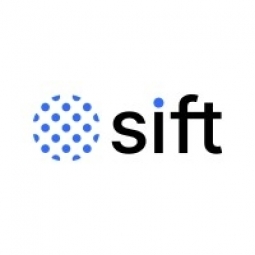Customer Company Size
Large Corporate
Region
- America
Country
- United States
Product
- Sift’s Content Integrity product
Tech Stack
- Sift
Implementation Scale
- Enterprise-wide Deployment
Impact Metrics
- Cost Savings
- Productivity Improvements
Technology Category
- Cybersecurity & Privacy - Application Security
Applicable Industries
- Education
Applicable Functions
- Business Operation
Use Cases
- Fraud Detection
Services
- Data Science Services
About The Customer
Skillshare is an online learning community for creators, where teachers and students gather to learn and teach anything they’re passionate about. Teachers can make money based on the minutes students have spent watching their classes, and students have the opportunity to pick up new skills – just look up a subject and start watching a class. In addition to the desktop site, on-the-go students can watch classes remotely using Skillshare’s iOS app. With over eight million students and thousands of classes in art, design, animation, photography, creative writing and more, Skillshare, based in New York City, is a global community with students and teachers from around the world.
The Challenge
Skillshare, an online learning community, was facing issues with fraud, fake accounts, and spam. Teachers were creating fake student accounts and watching their own classes to increase their earnings. The company also discovered collusion between teachers and students, with fraudsters using stolen credit cards to create many fake student accounts, and then redeeming the same teacher referral code across those accounts to get the fraudulent teacher referral bonuses. Fraudsters were also using Skillshare to engage in SEO spam by creating landing pages on the platform for products they were selling. This was risky as the landing pages could take users off-platform to questionable sites, and it was also detrimental to Skillshare’s reputation. Skillshare’s fraud management was primarily via SQL queries, and these schemes were only discovered after they had already happened. They needed a way to proactively detect and remove networks of colluding users, and to keep SEO spammers off of the platform.
The Solution
Skillshare turned to Sift’s Content Integrity product to get ahead of the fraudsters and their schemes. Trust and Safety Manager Susannah Page-Katz implemented Sift and, within two weeks, saw significant, accurate results from the machine learning model. Susannah used Workflows to automate blocking and deleting risky accounts based on Sift Score (risk score based on behavioral attributes), eliminating the need to review accounts manually, and stopping problem users at sign up before they even made it onto the platform. She was also able to automate the removal of spammy SEO advertisement pages via Workflows, without having to spend valuable time tracking down these pages and manually removing them. One of the most powerful Sift features for Skillshare has been the Network view, which was a game-changer for the company. It was a difficult, time-consuming process to try and unearth connected users via SQL queries; once Skillshare was able to visualize the entire web of students and teachers that were colluding to commit fraud, they not only better understood the scope of the problem, but were able to quickly remove those users from the platform and stop them from returning.
Operational Impact
Quantitative Benefit

Case Study missing?
Start adding your own!
Register with your work email and create a new case study profile for your business.
Related Case Studies.

Case Study
Revolutionizing Medical Training in India: GSL Smart Lab and the LAP Mentor
The GSL SMART Lab, a collective effort of the GSL College of Medicine and the GSL College of Nursing and Health Science, was facing a challenge in providing superior training to healthcare professionals. As clinical medicine was becoming more focused on patient safety and quality of care, the need for medical simulation to bridge the educational gap between the classroom and the clinical environment was becoming increasingly apparent. Dr. Sandeep Ganni, the director of the GSL SMART Lab, envisioned a world-class surgical and medical training center where physicians and healthcare professionals could learn skills through simulation training. He was looking for different simulators for different specialties to provide both basic and advanced simulation training. For laparoscopic surgery, he was interested in a high fidelity simulator that could provide basic surgical and suturing skills training for international accreditation as well as specific hands-on training in complex laparoscopic procedures for practicing physicians in India.

Case Study
IoT platform Enables Safety Solutions for U.S. School Districts
Designed to alert drivers when schoolchildren are present, especially in low-visibility conditions, school-zone flasher signals are typically updated manually at each school. The switching is based on the school calendar and manually changed when an unexpected early dismissal occurs, as in the case of a weather-event altering the normal schedule. The process to reprogram the flashers requires a significant effort by school district personnel to implement due to the large number of warning flashers installed across an entire school district.

Case Study
Implementing Robotic Surgery Training Simulator for Enhanced Surgical Proficiency
Fundacio Puigvert, a leading European medical center specializing in Urology, Nephrology, and Andrology, faced a significant challenge in training its surgical residents. The institution recognized the need for a more standardized and comprehensive training curriculum, particularly in the area of robotic surgery. The challenge was underscored by two independent studies showing that less than 5% of residents in Italian and German residency programs could perform major or complex procedures by the end of their residency. The institution sought to establish a virtual reality simulation lab that would include endourological, laparoscopic, and robotic platforms. However, they needed a simulator that could replicate both the hardware and software of the robotic Da Vinci console used in the operating room, without being connected to the actual physical console. They also required a system that could provide both basic and advanced simulation training, and a metrics system to assess the proficiency of the trainees before they performed surgical procedures in the operating theater.

Case Study
Edinburgh Napier University streamlines long-distance learning with Cisco WebEX
• Geographically dispersed campus made in-person meetings costly and inconvenient.• Distance-learning programs in Malaysia, India, and China required dependable, user-friendly online tools to maximize interaction in collaborative workspaces.• Virtual learning environment required a separate sign-in process, resulting in a significant administrative burden for IT staff and limited adoption of collaboration technology.

Case Study
8x increased productivity with VKS
Before VKS, a teacher would spend a lot of time showing a group of 22 students how to build a set of stairs within a semester of 120 hours. Along with not leaving the teacher much time to provide one-on-one support for each student to properly learn carpentry, it also left a considerable amount of room for error. Key information would be misinterpreted or lost as the class was taught in the typical show-and-tell way.

Case Study
Scalable IoT Empowering GreenFlex's Sustainable Growth
GreenFlex, a company that supports sustainable development, decarbonization, and energy efficiency, faced several challenges in its quest to expand its business. The company needed to deploy a robust and sustainable IoT technology to support its growth. It was crucial for them to monitor and control devices at customer sites in a safe and reliable manner. They also needed to integrate devices across a range of communication protocols and gather and act on data to meet efficiency targets. GreenFlex had previously built IoT capabilities into its digital platform, GreenFlexIQ, to monitor and manage customer sites remotely. However, they soon realized that they needed a new platform to support their ambitions. They needed a platform that could scale to connect more devices for production management and make it easier for the operations team to manage devices in the field.







